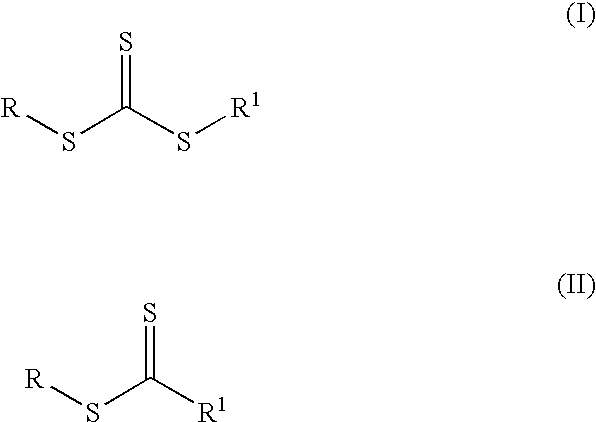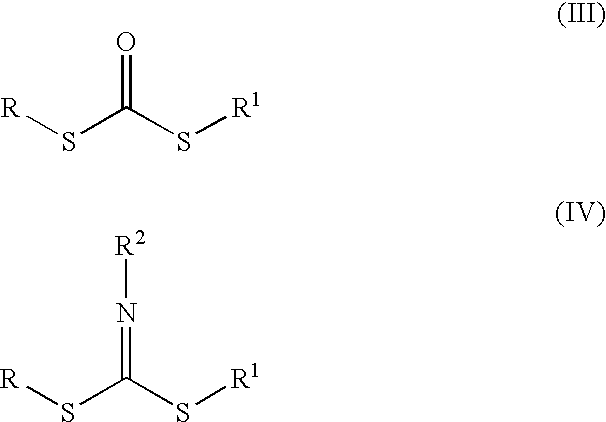Pressure-sensitive adhesive with dual crosslinking mechanism
- Summary
- Abstract
- Description
- Claims
- Application Information
AI Technical Summary
Benefits of technology
Problems solved by technology
Method used
Image
Examples
example 1
[0132]Polymer 1 was concentrated by method 1 (solids content 99.5%, viscosity test method D) and blended by method 2 with 0.30% by weight of the trimerized aliphatic diisocyanate Desmodur XP 2410 (from Bayer AG, Germany). To improve its meterability the trimerized diisocyanate was diluted in a ratio of 1:1 with the liquid phosphate ester Reofos 65 (from Great Lakes, USA). The operating parameters are summarized in table 1. The processing time of the compound was more than 30 minutes at an effective composition temperature of 82° C. after exiting the Leistritz extruder. Coating at a rate of 50 g / m2 took place using an extrusion die from SIG onto pretreated PET film. The coating was subsequently heated by IR lamps and postcrosslinked by UV irradiation. After storage at 23° C. for 10 days, the technical adhesive properties were determined according to test methods E, F, G and H (table 2). In comparison with the non-UV-postcrosslinked reference specimen, the marked improvement in qualit...
example 2
[0133]The base polymer 2 concentrated by method 1 (viscosity test method D) was subjected as in example 1 to blending with crosslinker and was coated, heated, and postcrosslinked. 0.40% by weight (based on acrylate copolymer) of the trimerized HDI polyisocyanate Desmodur N3600 (Bayer AG, Germany) was added, by method 2. After coating and UV irradiation as per method 2, and after storage for 10 days at room temperature, the specimen was analyzed by test methods E, F, G and H. For technical adhesive data see example 2 in table 2. The improvement in quality as a result of UV postcrosslinking is similar to that of example 1. The composition, however, is free of acrylic acid and is therefore somewhat softer. It is surprising that the bond of an acrylic-acid-free composition has sufficient thermal stability (SAFT test).
example 3
[0134]Prior to concentration, 20% by weight of Foral 85 were dissolved in the solution of the polymer 2 and, following complete dissolution of the resin, concentration took place by method 1 (viscosity test method D). Subsequently, using method 2, 0.80% by weight (based on the acrylate copolymer) of Desmodur N3600 was mixed into the resin-modified acrylate hotmelt PSA, and coating and UV postcrosslinking took place as described in example 1. After storage at room temperature for 10 days the specimen was analyzed by test methods E, F, G and H. For technical adhesive data see example 3 in table 2. As the data suggest, resin-modified polyacrylates also exhibit very good values by this method.
PUM
| Property | Measurement | Unit |
|---|---|---|
| Fraction | aaaaa | aaaaa |
| Molar mass | aaaaa | aaaaa |
| Temperature | aaaaa | aaaaa |
Abstract
Description
Claims
Application Information
 Login to View More
Login to View More - Generate Ideas
- Intellectual Property
- Life Sciences
- Materials
- Tech Scout
- Unparalleled Data Quality
- Higher Quality Content
- 60% Fewer Hallucinations
Browse by: Latest US Patents, China's latest patents, Technical Efficacy Thesaurus, Application Domain, Technology Topic, Popular Technical Reports.
© 2025 PatSnap. All rights reserved.Legal|Privacy policy|Modern Slavery Act Transparency Statement|Sitemap|About US| Contact US: help@patsnap.com



